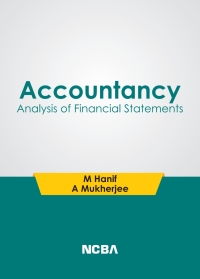Question
A. Impairment exists when: book value is equal to the fair value of the asset. none of the answers are correct. book value is more
A. Impairment exists when:
- book value is equal to the fair value of the asset.
- none of the answers are correct.
- book value is more than the fair value of the asset.
- book value is less than the fair value of the asset.
B. An asset that cost $20,000 was retired and sold for $6,000 cash. Accumulated depreciation on the asset was $14,000. The entry to record this retirement and sale calls for recognizing:
- a loss of $14,000.
- a gain of $6,000.
- no gain or loss.
- a gain of $7,000
C. If an item of equipment is retired and scrapped or sold, how should the retirement be accounted for?
- the accumulated depreciation account is removed from the books.
- the difference between the proceeds or sales price and net book value is recorded as a gain or loss.
- all of the answers are correct.
- the asset account is removed from the books.
D. An asset acquired on June 22, 20X1, cost $70,000, has an estimated useful life of five years, and has a net salvage value of $10,000. What is the amount of depreciation expense for 20X1 if the straight-line method is used?
- $8,000
- $12,000
- $7,000
- $6,000
E. Assuming a five-year life, a cost of $40,000, and an estimated net salvage value of $8,000, what would be the depreciation for the second year of the life of an asset if the double-declining-balance method is used?
- $6,400
- $16,000
- $8,000
- $9,600
F. When an asset is constructed and used by the business, the capitalized cost includes all the following except:
- measurable indirect cost.
- cost of labor to construct the asset.
- permits and fees.
- materials.
G. A company that discounts an interest-bearing note receivable:
- always recognizes interest income when the note is discounted.
- never recognizes interest income when the note is discounted.
- recognizes interest income if the proceeds exceed the face value of the note discounted.
- recognizes interest income only if the proceeds from discounting exceeds the maturity value of the note discounted.
Step by Step Solution
There are 3 Steps involved in it
Step: 1

Get Instant Access to Expert-Tailored Solutions
See step-by-step solutions with expert insights and AI powered tools for academic success
Step: 2

Step: 3

Ace Your Homework with AI
Get the answers you need in no time with our AI-driven, step-by-step assistance
Get Started


